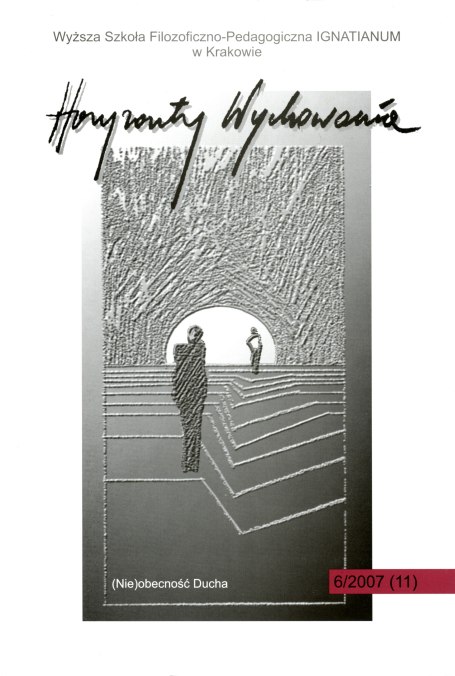Edytorial
Abstract
Człowiek jest jednością duchowo-cielesną, nawet jeżeli wcześniej Platon, a później Kartezjusz wyraźnie rozgraniczali te dwa konstytutywne komponenty człowieka. W starożytnej Grecji, skąd do naszego języka dotarło pojęcie „duch”, uważano, że pneuma to „owa siła, która wprawia powietrze w ruch”, przez co mamy delikatny lub gwałtowny powiew wiatru, a także delikatny oddech człowieka. Na tej bazie już w V wieku przed naszą erą lekarze greccy stwierdzili, że ów duch jest wewnętrzną, nienarodzoną siłą, a Arystoteles powiedział, że ta wewnętrzna siła formuje całego człowieka począwszy od zarodka życia, czyli embrionu. Dochodzimy w ten sposób do zbliżenia pojęcia „ducha” do pojęcia duszy, psyche, nawet jeżeli „duch” wskazuje bardziej na aspekt materialny. Dlatego też stoicy twierdzili, iż „duch duszy” przyjmuje funkcje działania, gdy chodzi o poznanie, język, myśl, jest on tą siłą uniwersalną i fundamentalną w człowieku, która jest motorem jego funkcjonowania, czyli życia. Biblia natomiast, kiedy mówi o „ruah Jahwe” o „Duchu Boga”, to wskazuje na Ducha, który wszystko stwarza i powołuje do życia...Copyright (c) 2016 HORIZONS OF EDUCATION

This work is licensed under a Creative Commons Attribution-NonCommercial-NoDerivatives 4.0 International License.
Authors who publish in this journal agree to the following terms:
- Authors retain the copyright to their work while granting the journal the right of first publication. The work will be simultaneously licensed under a CC BY-ND license, which permits others to share the work with proper credit given to the author and the original publication in this journal.
- Authors may enter into additional, non-exclusive agreements for the distribution of the published version of the work (e.g., posting it in an institutional repository or publishing it in another journal), provided that the original publication in this journal is acknowledged.
We allow and encourage authors to share their work online (e.g., in institutional repositories or on personal websites) both before and during the submission process, as this can foster beneficial exchanges and lead to earlier and increased citations of the published work. (See The Effect of Open Access). We recommend using any of the following academic networking platforms:





